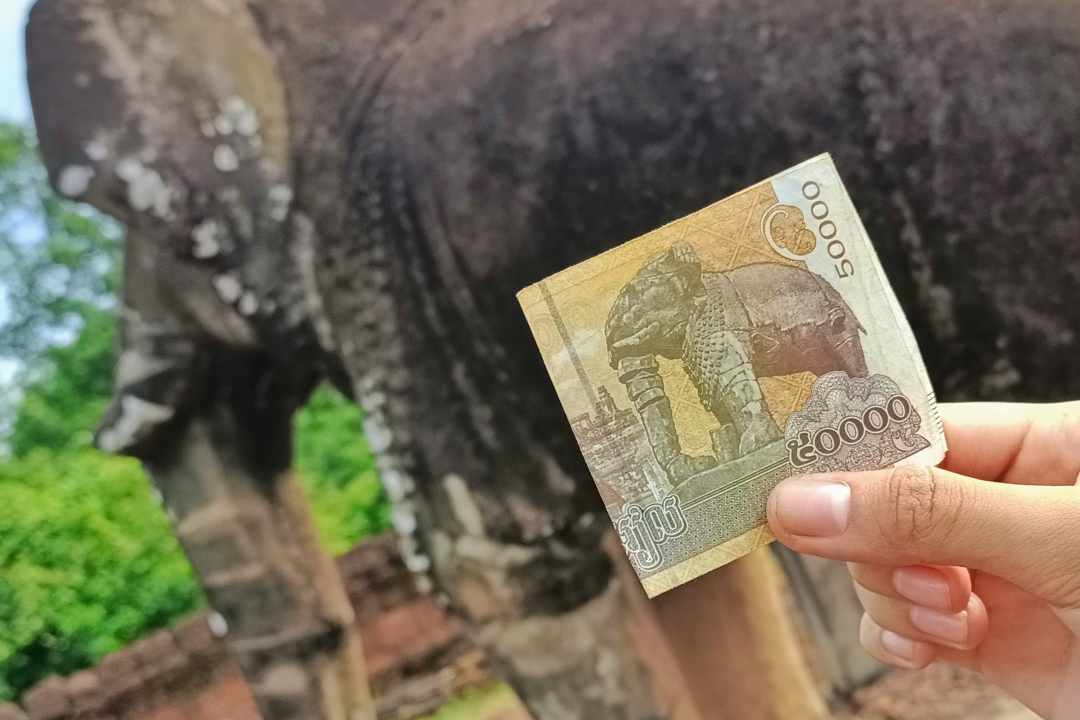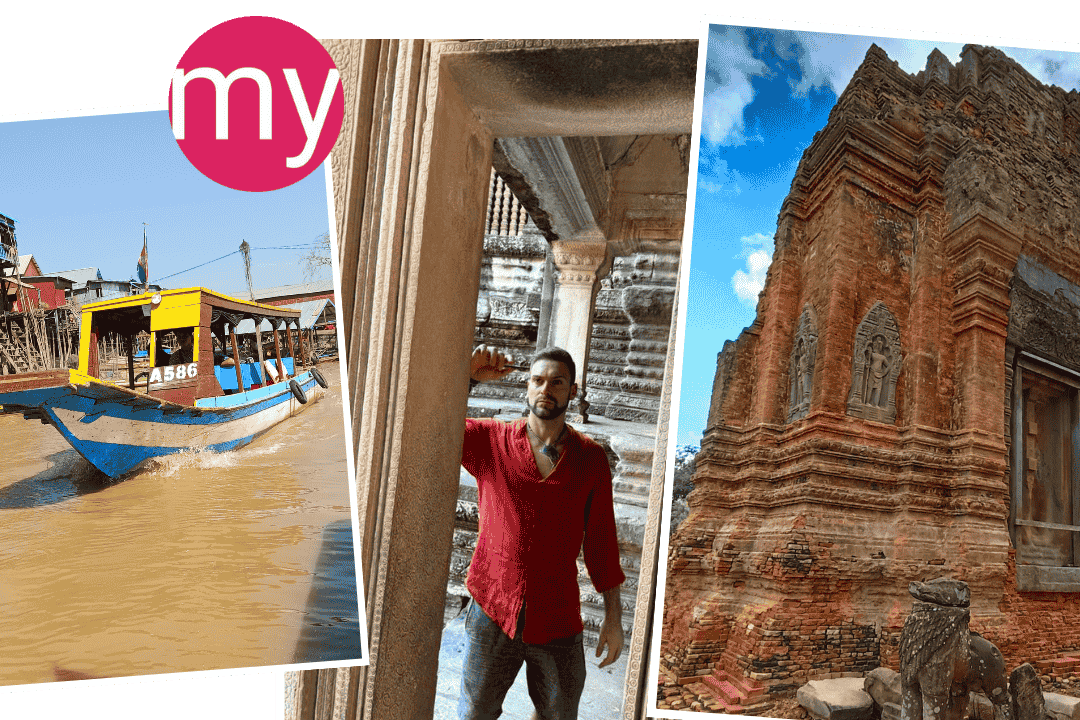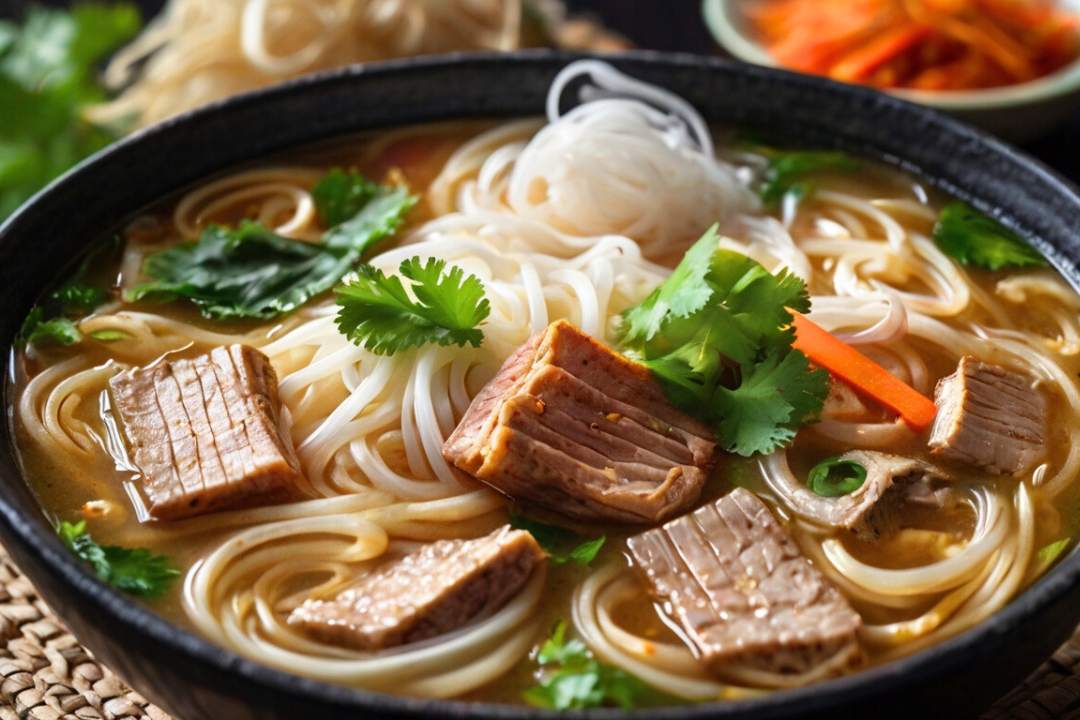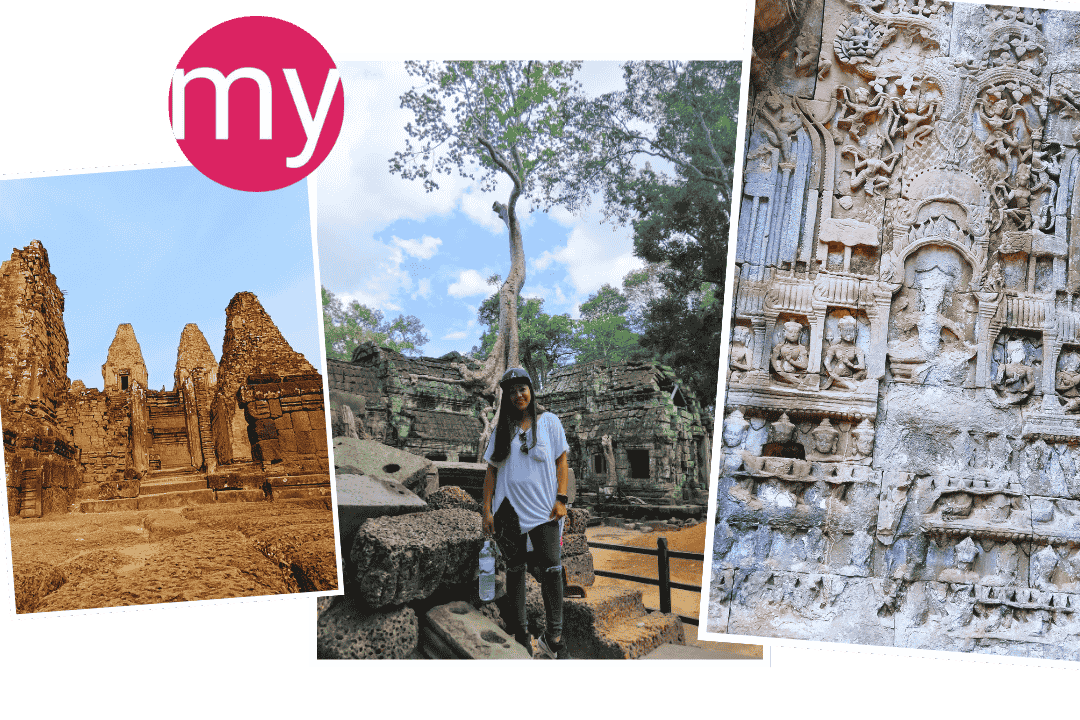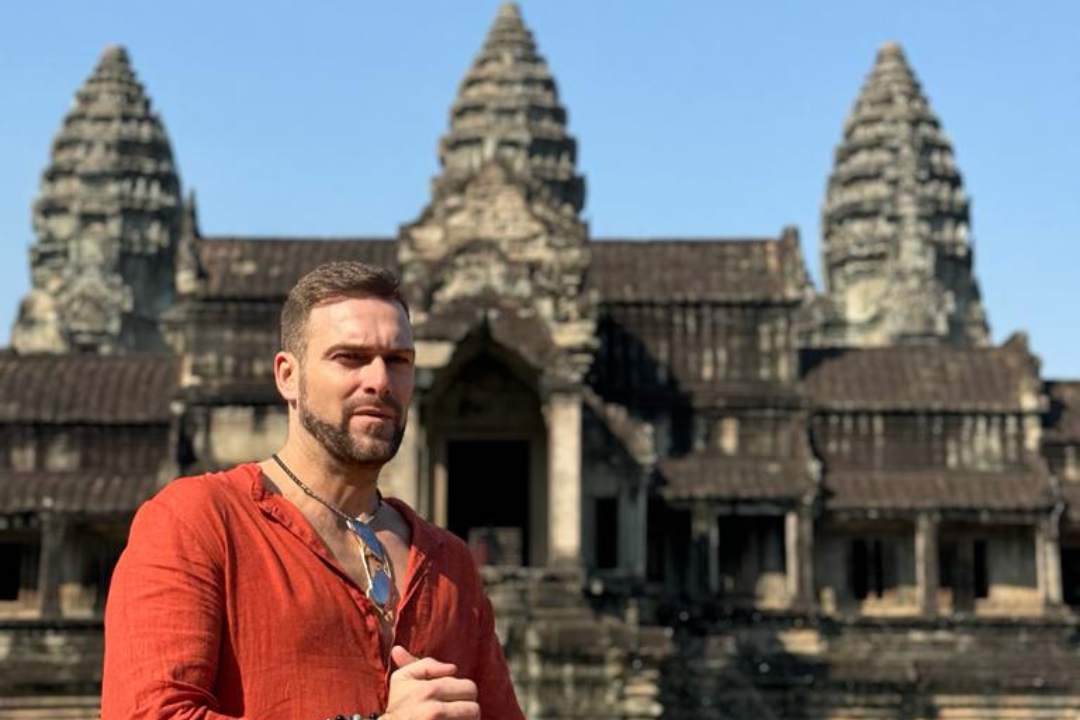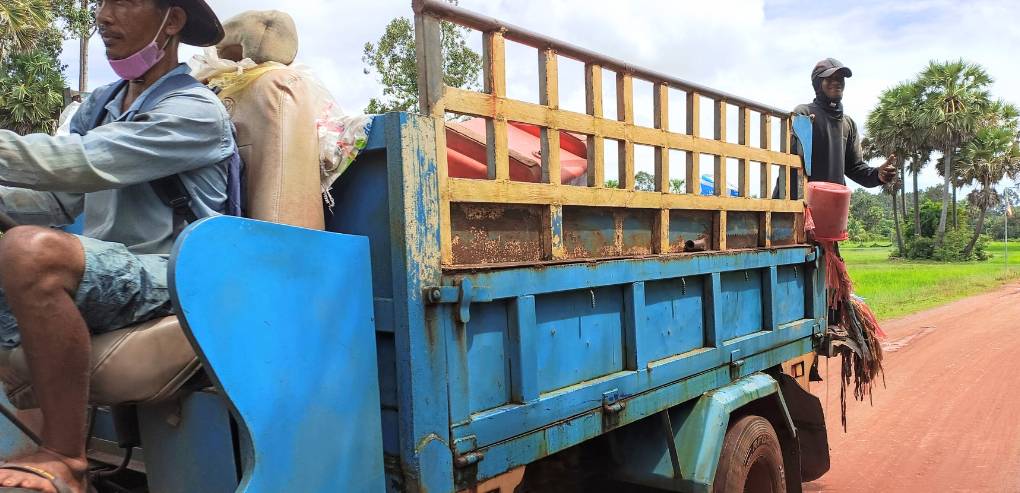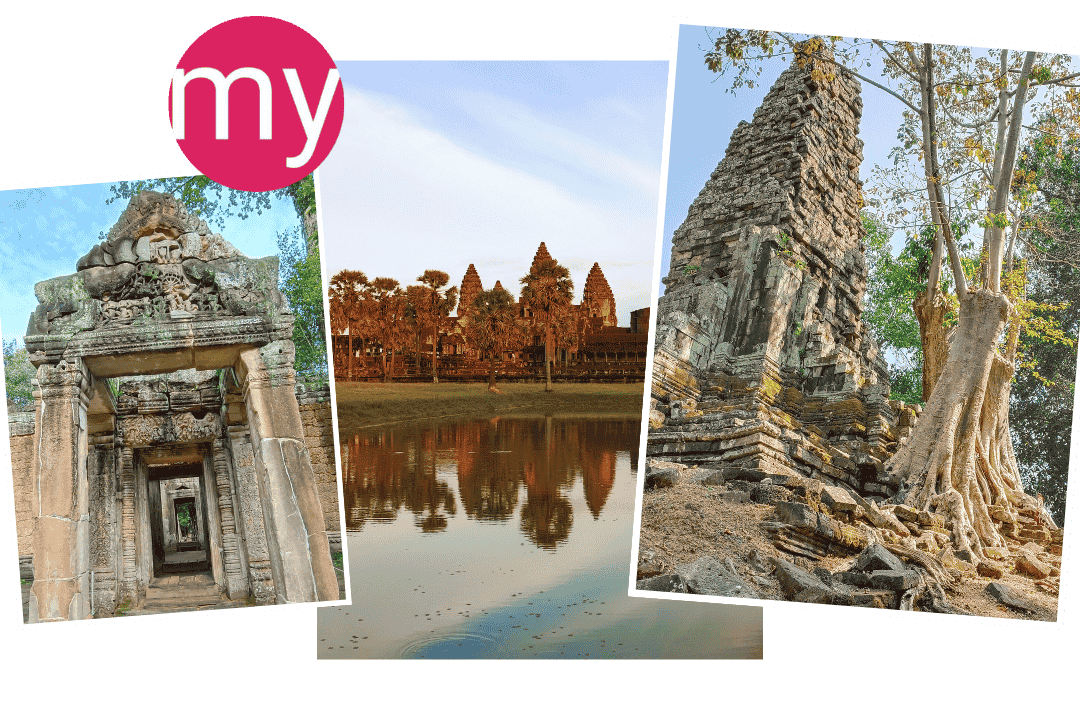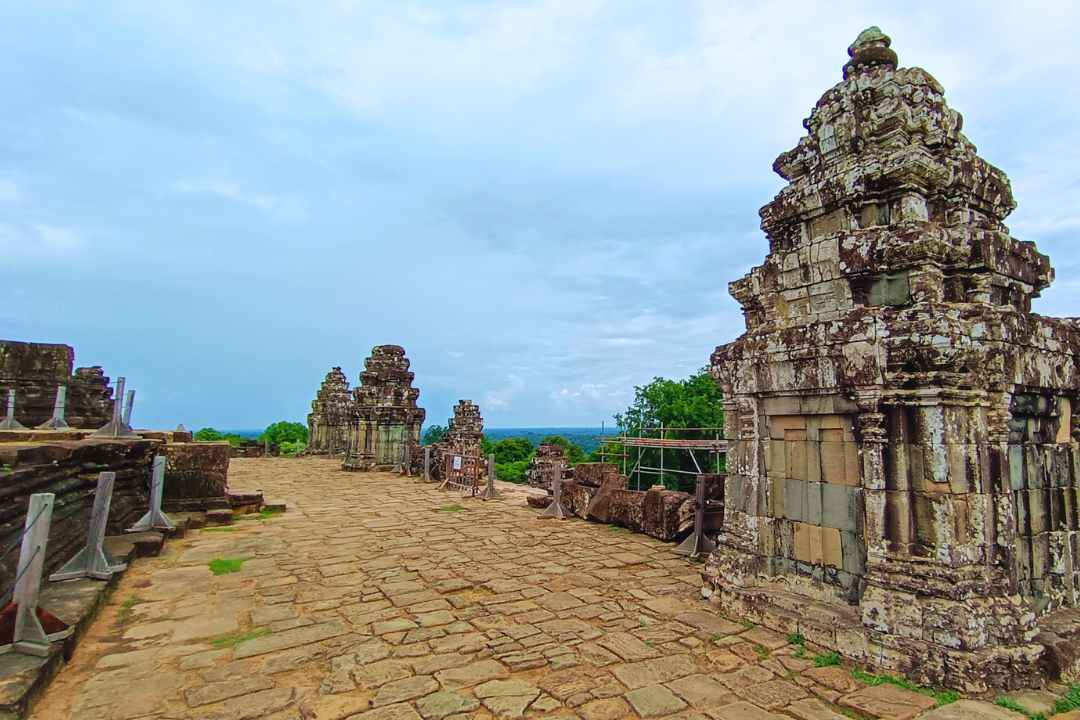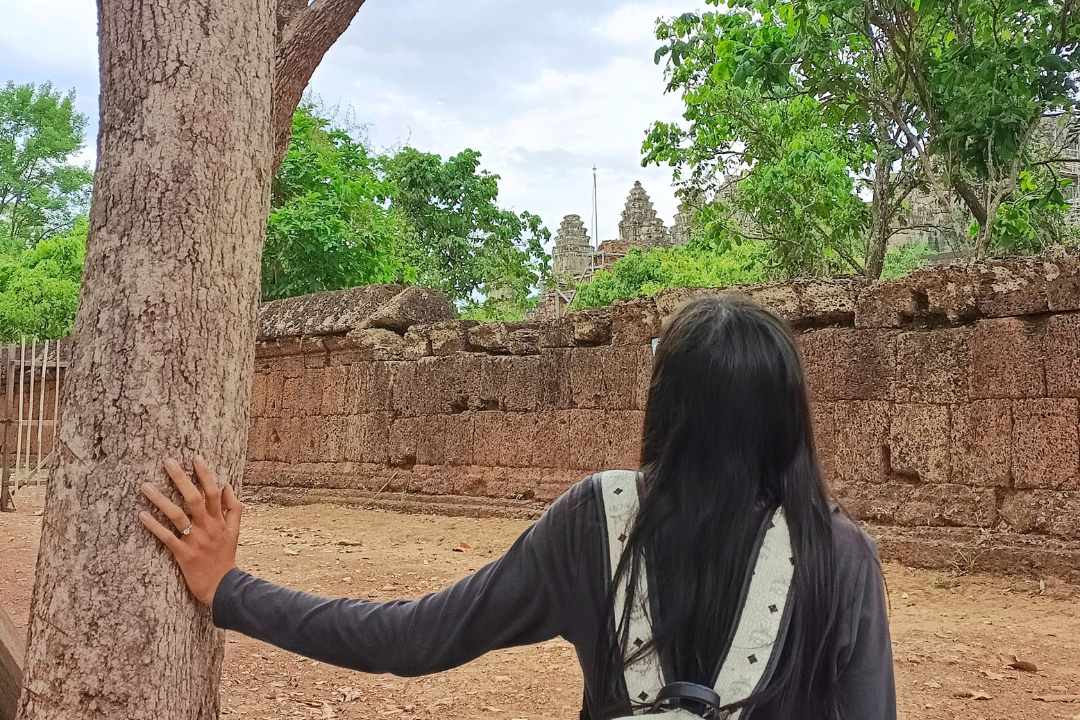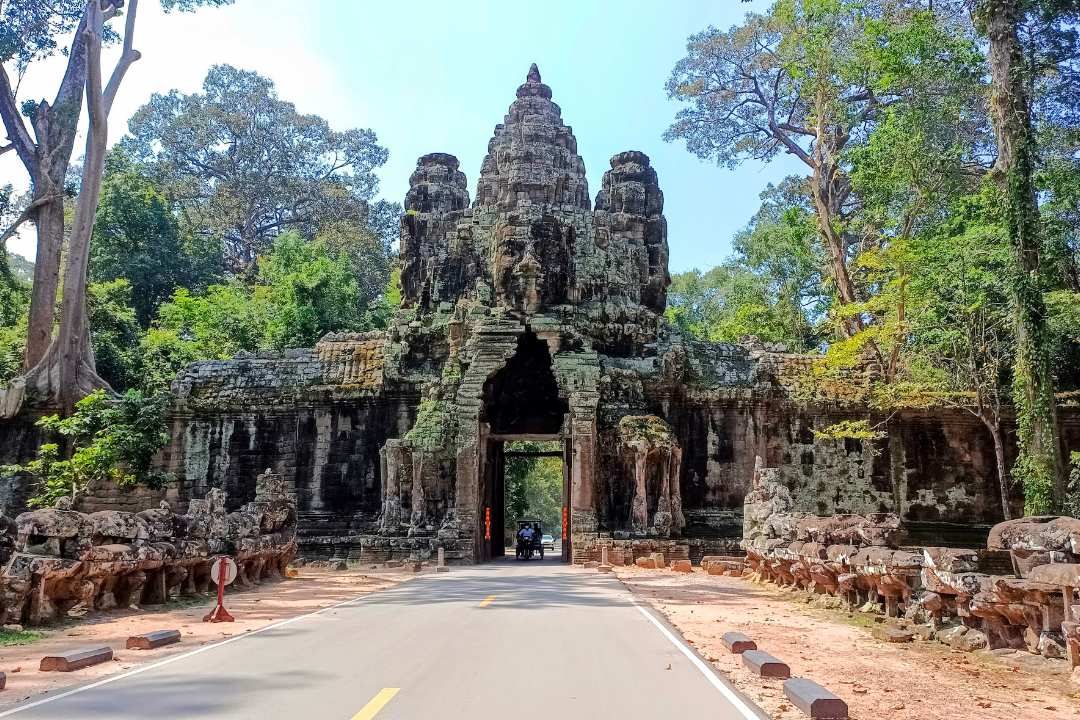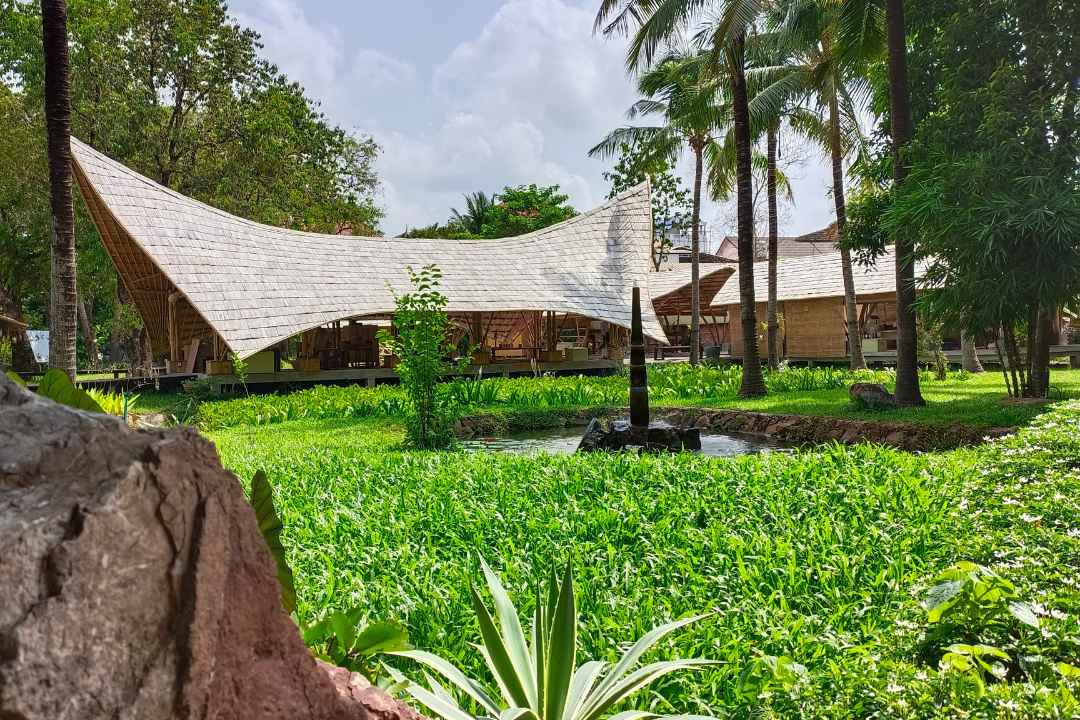Temple Face-Off - Bakong Temple vs Ta Keo vs Once Again, One You've Never Heard Of
You’ll Climb One, Snap a View from Another, and Get Blessed by a Monk at the Third - Bakong’s Old, Ta Keo’s Tall, But Preah Palilay Might Just Steal Your Soul (in a good way)
Bakong Temple vs Ta Keo Temple vs Preah Palilay Temple offers three amazing experiences most tourists miss completely. These quiet temples in Siem Reap get 250,000 fewer visitors than Angkor Wat each year. You’ll climb steep steps at Ta Keo for amazing views, walk through history at 9th-century Bakong, and get a real monk blessing at peaceful Preah Palilay – all without fighting crowds.
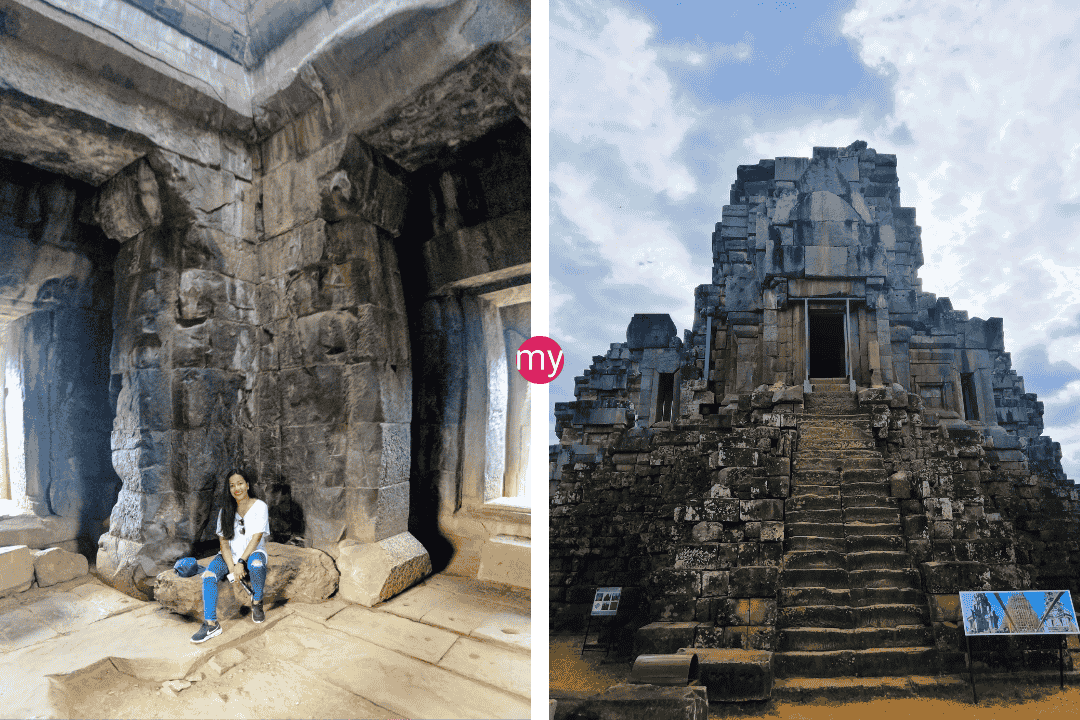
Bakong Temple vs Ta Keo Temple vs Preah Palilay Temple: The Battle for Your Soul (Spoiler: They All Win)
Bakong Temple vs Ta Keo Temple vs Preah Palilay Temple is a comparison of three alternative temples to Angkor Wat that offer unique experiences in Cambodia’s famous temple complex. These lesser known Angkor temples provide authentic cultural encounters, stunning architecture, and peaceful settings without the massive crowds.
These ancient temples in Cambodia each serve different purposes for visitors. Bakong Roluos group temple dates back to 881 CE and represents the first true temple-mountain design. Ta Keo stands 22 meters tall with unfinished sandstone that creates dramatic photo opportunities. Preah Palilay blends Buddhist and Hindu elements in a jungle setting where monks still give traditional blessings.
Key highlights include:
- 78% fewer crowds than Angkor Wat during peak hours
- Combined annual revenue of $2.085 million from sustainable tourism
- Active restoration projects ensuring long-term preservation
- Real cultural experiences like monk blessings and jungle exploration
These offbeat temples near Angkor Wat help visitors understand Khmer history while supporting local communities through responsible tourism.
Bakong’s Old, Ta Keo’s Tall, But Preah Palilay Might Just Steal Your Soul (in a good way)
Bakong Temple vs Ta Keo Temple vs Preah Palilay Temple represents the best underrated Angkor temples for travelers seeking authentic experiences. Recent data shows these three sites combined receive only 44,000 visitors annually compared to Angkor Wat’s 1.02 million in 2024. This creates a 78% reduction in crowd density during peak visiting hours.
Ta Keo offers the most challenging climb with panoramic forest views from its 22-meter summit. Bakong provides the richest historical context as the first sandstone temple-mountain built in 881 CE. Preah Palilay delivers the most spiritual experience through active Buddhist ceremonies and jungle atmosphere.
Each temple generates roughly $47.50 per visitor, matching Angkor Wat’s efficiency despite lower visitor numbers. Cambodia jungle temples like these three represent sustainable tourism models that preserve cultural heritage while supporting local economies.
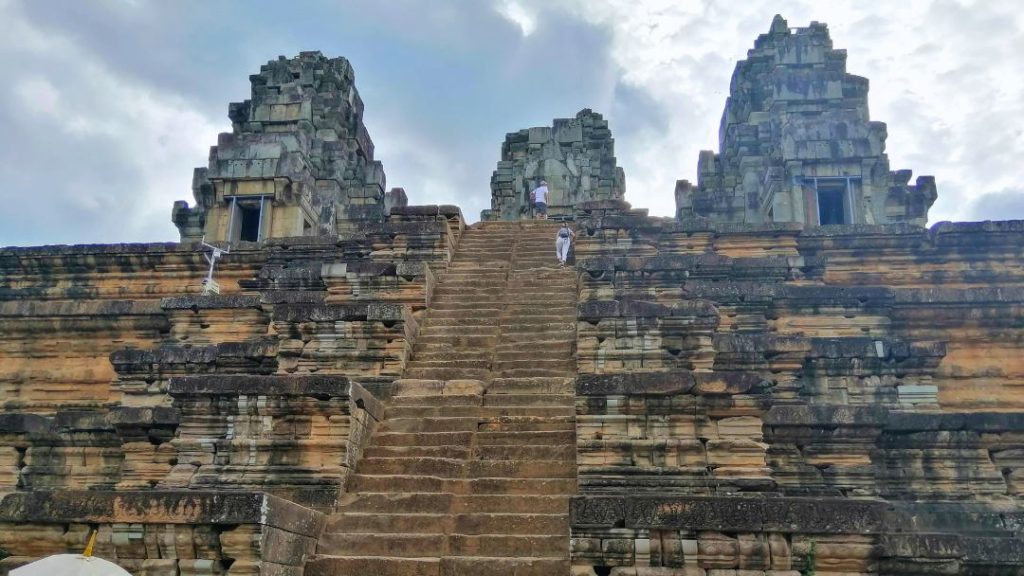
Why Bakong Temple vs Ta Keo Temple vs Preah Palilay Temple Will Change Your Cambodia Trip
Most people spend their whole Siem Reap visit taking selfies at Angkor Wat with 2,000 other tourists. Smart travelers know about these three secret temples near Angkor that offer something completely different.
Bakong Temple vs Ta Keo Temple vs Preah Palilay Temple gives you three distinct experiences in one day. Each temple tells a different story about the Khmer Empire. More importantly, you’ll actually enjoy visiting them.
These crowd-free temples Angkor receive just 4.3% of total park visitors. That means real peace and quiet. No fighting for photos. No waiting in lines. Just you and some of the most amazing historical temples Cambodia ever built.
The Numbers Don’t Lie: Why These Temples Matter
| Temple | Annual Visitors | Daily Average | Revenue Generated | Crowd Level |
|---|---|---|---|---|
| Angkor Wat | 1,020,000 | 2,795 | $47.8 million | Extremely crowded |
| Bakong | 20,000 | 55 | $950,000 | Very quiet |
| Ta Keo | 18,000 | 50 | $850,000 | Very quiet |
| Preah Palilay | 6,000 | 16 | $285,000 | Almost empty |
Real Talk About Temple Tours
Wait, this actually reminds me of something that happened on our 1 Day Angkor Wat to Siem Reap Floating Village tour last month. We had this family from Germany who almost skipped Bakong because they’d never heard of it. By the end of the day, the dad said it was his favorite temple. “Finally,” he told me, “somewhere I can actually think.”
That’s exactly why these three temples work so well together. Each one offers something you simply won’t find at the main tourist sites.
Round 1: Bakong Temple – The Granddaddy of Temple Mountains
Skip the Crowds, Touch the Stone, Get the Shot—Only One Temple Does All Three
Bakong Temple stands as the first real temple-mountain in Khmer history. King Indravarman I built it in 881 CE as his state temple. Every pyramid temple that came after copied Bakong’s basic design.
What Makes Bakong Special
The Bakong Roluos group temple sits 15 kilometers east of Siem Reap. It’s part of the original capital called Hariharalaya. Before Angkor existed, this was the center of the Khmer world.
The temple rises in five levels like a stone mountain. Each level represents a different realm in Hindu cosmology. The central tower once held a sacred linga dedicated to Shiva. Today, you can climb most of the structure and feel what it was like to visit the first great Khmer temple.
Key Bakong Facts:
- Built in 881 CE (139 years before Angkor Wat)
- Height: 25 meters with five-tier pyramid design
- Base: 60 meters square at foundation
- Materials: Sandstone with brick subsidiary towers
- Visitors per day: Only 55 people on average
The Bakong Experience
Walking around Bakong feels like stepping back 1,200 years. The temple complex originally covered 900 by 700 meters. Today, you can see the remains of the dual moat system and satellite temples.
The main pyramid has steep stone steps leading to each level. Unlike Angkor Wat, you can actually climb to the top (though pregnant women and young children should be careful). From the upper levels, you look out over rice fields and small villages that probably look much like they did centuries ago.
Our Journey Through Time and Nature tour always includes Bakong because it tells the complete story of Khmer temple building. You see how everything started here.
Why History Buffs Love Bakong
Bakong shows clear connections to Borobudur temple in Java. Scholars think Khmer architects studied Indonesian temple design before building their first mountain temple. The similarities in layout and symbolic meaning are striking.
The temple also features some of the earliest naga balustrades in Khmer art. These seven-headed serpent railings became a standard feature in later temples. At Bakong, you see them in their original form.
Round 2: Ta Keo Temple – The Unfinished Giant
Most Guides Miss It. Most Tourists Never Find It. But This Temple? It’s Pure Magic
Ta Keo Temple represents one of Angkor’s greatest mysteries. King Jayavarman V started building it around 1000 CE. Then construction stopped. No one knows exactly why.
What Makes Ta Keo Unique
This temple was supposed to be the grandest ever built. The plan called for five massive towers on top of a 22-meter pyramid. Only the basic structure got finished. No decorative carving was ever added.
That unfinished state makes Ta Keo special today. You see pure architectural form without any decoration. The massive sandstone blocks create dramatic shadows and shapes. Photographers love the clean lines and geometric patterns.
Ta Keo Quick Stats:
- Construction: Started around 1000 CE, never finished
- Height: 22 meters across five terraces
- Base: 122 by 106 meters on first level
- Material: Completely sandstone (first temple to use only stone)
- Style: Khleang period architecture
The Ta Keo Climbing Experience
Ta Keo offers the most physical challenge of these three temples. The stairs are steep and uneven. There are no handrails. Some steps are over a foot high.
But the climb is worth it. From the top, you get 360-degree views over the forest canopy. On clear days, you can see other temple towers poking through the trees. It’s one of the best viewpoints in the entire Angkor complex.
Our Private Angkor Wat Mix Temples Photo Tour always starts at Ta Keo for sunrise photos. The morning light hitting those bare stone walls creates incredible contrast.
Why Ta Keo Was Never Finished
Several theories explain why construction stopped:
- Lightning struck the unfinished temple (bad omen)
- King Jayavarman V died before completion
- Political upheaval disrupted royal building projects
- Resources were redirected to other temples
The mystery adds to Ta Keo’s appeal. Standing on top of the unfinished pyramid, you imagine what might have been. This temple could have rivaled Angkor Wat if completed.
Conservation at Ta Keo
Chinese restoration experts have been working on Ta Keo since 2013. They’re stabilizing the structure and making it safer for visitors. The work preserves the temple’s unfinished character while preventing further decay.
This international cooperation shows how important Ta Keo is to Cambodian heritage. Even unfinished, it represents a crucial moment in Khmer architectural development.

Round 3: Preah Palilay Temple – The Spiritual Surprise
This Temple Showdown Ends with a Jungle Surprise and No Tourists in Sight
Preah Palilay Temple might be the smallest of these three, but it offers the most meaningful experience. This temple still functions as an active Buddhist site. Real monks live here and perform ceremonies.
What Makes Preah Palilay Special
Built in the late 12th or early 13th century, Preah Palilay sits in a peaceful forest clearing inside Angkor Thom. The temple blends Hindu and Buddhist elements, showing how Cambodian religion evolved.
The approach leads through a short jungle path. Giant trees shade the temple grounds. The atmosphere feels mystical and timeless. This is what all Angkor temples probably felt like before tourism arrived.
Preah Palilay Highlights:
- Period: Late 12th to early 13th century
- Style: Bayon period with mixed religious elements
- Setting: Forest clearing inside Angkor Thom
- Features: Seven-headed naga balustrades, Buddha images
- Activity: Active Buddhist monastery with resident monks
The Monk Blessing Experience
The most special thing about Preah Palilay is getting a traditional monk blessing. During our Private Angkor Wat Sunset Tour, we always stop here for this ceremony.
The blessing includes:
- Short Buddhist prayers in Pali language
- Blessing with holy water
- Red string bracelet tied around your wrist
- Explanation of Buddhist teachings
This isn’t a tourist show. These are real religious ceremonies that Cambodians have practiced for centuries. The monks appreciate respectful visitors and enjoy sharing their traditions.
The Forest Temple Atmosphere
Walking to Preah Palilay feels like entering a different world. The jungle canopy blocks most sunlight. Ancient trees grow between temple ruins. Birdsongs replace traffic noise.
The temple itself is modest compared to Angkor Wat or even Ta Keo. But the setting creates a magical mood. Many visitors say Preah Palilay feels more spiritual than any other Angkor temple.
Our Angkor Wat Small Circuit always includes time for quiet reflection at Preah Palilay. It’s the perfect place to process all the history and beauty you’ve seen.
Religious Significance
Preah Palilay shows how Buddhism gradually replaced Hinduism in the Khmer Empire. The temple has Hindu design elements but Buddhist statues and ceremonies. This religious transition shaped Cambodian culture permanently.
The active monastery connects past and present. Seeing monks in saffron robes walking among ancient stones reminds you that these aren’t just museum pieces. They’re living parts of Cambodian spiritual life.
Bakong Temple vs Ta Keo Temple vs Preah Palilay Temple – The Ultimate Comparison
For First-Time Visitors
If you only have time for one temple, choose based on what interests you most:
- History lovers: Bakong Temple tells the complete origin story
- Adventure seekers: Ta Keo offers the best climbing and views
- Spiritual travelers: Preah Palilay provides authentic cultural experiences
For Photography
Each temple offers different photo opportunities:
| Temple | Best Photo Times | Photography Style | Difficulty Level |
|---|---|---|---|
| Bakong | Morning golden hour | Architectural details, wide shots | Easy |
| Ta Keo | Sunrise/sunset | Dramatic shadows, panoramic views | Challenging |
| Preah Palilay | Filtered forest light | Atmospheric, spiritual | Easy |
For Physical Ability
Bakong: Moderate climbing with safer steps and some handrails. Good for most fitness levels.
Ta Keo: Steep, uneven stairs require good balance and fitness. Not recommended for anyone with mobility issues.
Preah Palilay: Minimal walking and climbing. Accessible for almost everyone.
For Cultural Learning
All three temples teach different aspects of Khmer history:
- Bakong: Foundation of temple-mountain architecture
- Ta Keo: Peak of classical Khmer building ambition
- Preah Palilay: Religious transformation from Hindu to Buddhist
Why These Mystical Temples Cambodia Beat the Tourist Traps
The Crowd Factor
Numbers tell the real story. While Angkor Wat sees nearly 3,000 visitors per day, these three temples combined get fewer than 120 daily visitors. That’s a 96% reduction in crowds.
At Angkor Wat, you wait in lines to take photos. At these temples, you often have entire sections to yourself. The difference in experience quality is enormous.
Authentic Cultural Encounters
Remote temples Siem Reap like these three offer real interactions with Cambodian culture. At Preah Palilay, you meet practicing Buddhist monks. At Bakong, local vendors share stories about their families who have lived near the temple for generations.
These authentic moments don’t happen at overcrowded tourist sites. When temples aren’t packed with tour groups, locals feel more comfortable sharing their culture.
Supporting Sustainable Tourism
Visiting peaceful temple experiences helps distribute tourism income more fairly. Small vendors at these temples depend on the few visitors they get. Your entry fees and purchases make a bigger difference here than at major sites.
The Cambodian government also uses these numbers to justify conservation funding. More visitors to lesser-known temples means more resources for preservation.
Planning Your Day Trips from Siem Reap Temples
The Perfect Day Itinerary
7:00 AM: Start at Bakong Temple (cooler weather, better light) 9:00 AM: Drive to Ta Keo Temple for climbing and views 11:00 AM: Visit nearby temples in Angkor Thom area 1:00 PM: Lunch break in Siem Reap 3:00 PM: Afternoon at Preah Palilay for monk blessing 5:00 PM: Sunset at Phnom Bakheng or Pre Rup
This schedule gives you enough time at each temple without rushing. It also avoids the hottest part of the day during temple climbing.
The Real Impact of Best Non Touristy Temples
Conservation Success Stories
Recent restoration work shows how sustainable tourism helps preserve these sites:
Bakong Temple: APSARA completed major stabilization work on the 5th tower in 2024. Visitor fees helped fund this project.
Ta Keo: Chinese conservation experts have strengthened the structure and improved visitor safety. This work continues through 2026.
Preah Palilay: Regular maintenance by the Buddhist community keeps this temple in excellent condition.
Community Benefits
Local communities around these temples benefit directly from tourism:
- Vendor income: 74% of household income comes from temple visitors
- Guide opportunities: Many young Cambodians learn English to work as temple guides
- Cultural preservation: Tourism interest encourages traditional arts and crafts
Future Sustainability
Cambodia projects 1.4 million Angkor visitors in 2025. These alternative temples to Angkor Wat can absorb some of that growth without becoming overcrowded. Each temple can handle 100-200 daily visitors comfortably.
My Personal Take on Bakong Temple vs Ta Keo Temple vs Preah Palilay Temple
After guiding tours to these temples for over five years, I’ve seen how they affect different travelers. Bakong impresses history lovers who want to understand where everything started. Ta Keo challenges adventure seekers who enjoy the climb and spectacular views. Preah Palilay moves people spiritually with its peaceful atmosphere and monk blessings.
Your next step: Pick the temple that matches your interests most. Book a tour that includes all three if you have time. Bring an open mind and comfortable shoes. Most importantly, give yourself enough time to really experience each place without rushing.
Ready to see these amazing temples yourself? Contact us to plan your perfect temple tour. We’ll help you choose the right combination of sites and create memories that last forever.
Additional Resources
Official Information: Visit Angkor Enterprise for current entry fees, opening hours, and conservation updates.
These resources provide the most current information about visiting Cambodia’s ancient temples and planning your trip to Siem Reap.
Brought to you by Dan and Mat, Your tour planners.
Featured
Explore more on My Siem Reap Tours
Koh Ker and Beng Mealea guided tour | Banteay Srei temple guided tour | Angkor Wat Sunrise tour | Private Angkor Wat Sunset Tour | Koh Ker and Beng Mealea guided tour | Morning Siem Reap floating village tour | Afternoon Siem Reap floating village tour | Private Angkor Wat special tour | Kulen Waterfall small group guided Tour | Private Angkor Wat mix temples photo tour
